8 Best Loans for eCommerce Business Funding in 2025
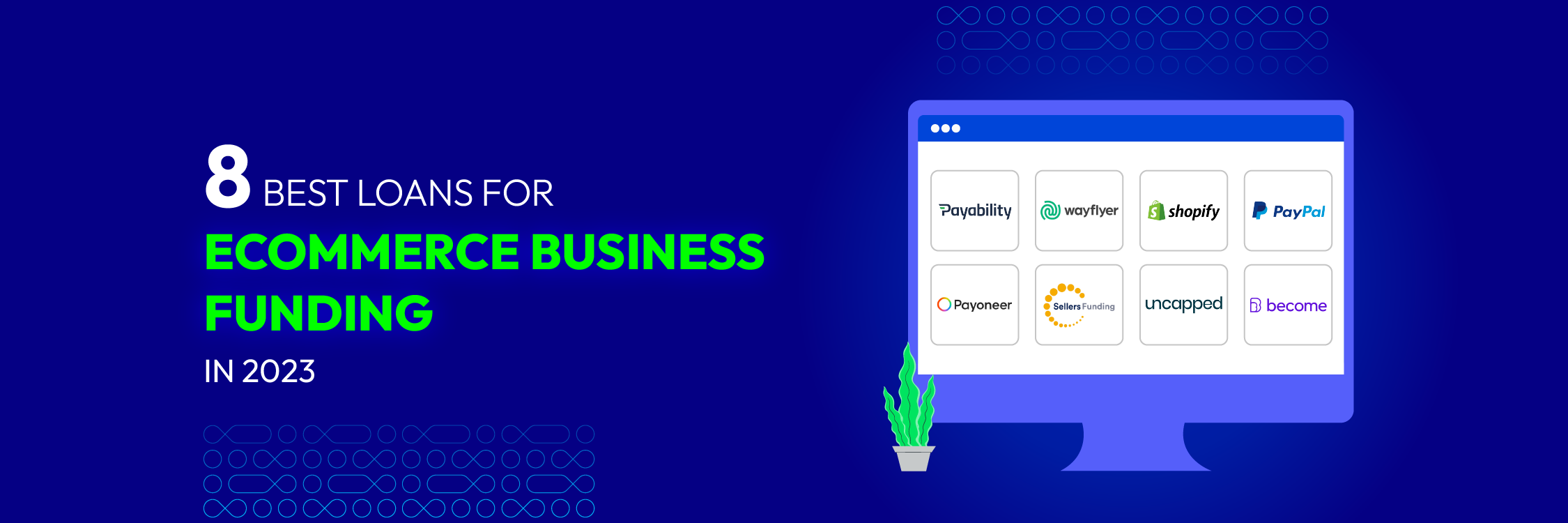
In this comprehensive guide, we delve into the realm of eCommerce business funding curated for ventures. We explore and analyze the eight best loans available in 2025, each meticulously selected based on their relevance, flexibility, terms, and viability for empowering and fueling the expansion of eCommerce enterprises. From traditional lending avenues to innovative financial platforms, this guide aims to assist entrepreneurs in navigating the diverse landscape of funding choices to propel their online businesses to new heights.
Ways Your eCommerce Business Gain Advantage from External Funding Solutions
External can significantly benefit an eCommerce business funding in several ways:
-
Expansion and Growth: Access to external funding, such as venture capital, investors, or loans, provides capital for scaling operations, expanding product lines, or entering new markets. Funding allows eCommerce businesses to invest in tech and infrastructure development. Moreover, adequate funding enables robust marketing campaigns, influencer collaborations, and customer acquisition strategies.
-
Inventory and Supply Chain Management: eCommerce businesses can use external funding to manage inventory effectively, procure goods at scale, negotiate better terms with suppliers, and optimize their supply chain processes.
-
Enhanced Customer Experience: Funding can be allocated towards improving customer service, offering faster shipping options, implementing hassle-free return policies, or developing user-friendly interfaces, thereby enhancing the overall customer experience.
-
Risk Mitigation and Adaptability: Having access to funding provides a safety net during challenging times, allowing businesses to adapt to market fluctuations, unforeseen expenses, or unexpected changes in consumer behavior.
-
Partnerships and Collaborations: Funding can support collaborations with other businesses, influencers, or strategic partners, opening doors to new opportunities, markets, and technologies.

Types of Funding
Merchant Cash Advance
This type of funding provides a lump sum in exchange for a percentage of future credit card sales. Repayment is made daily or weekly as a fixed percentage of sales until the advance, plus fees, is paid off.
Pros
-
Quick access to funds.
-
No collateral required.
-
Approval based on future credit card sales rather than credit score.
Cons
-
High fees and interest rates.
-
Daily or weekly repayments can strain cash flow.
-
Not regulated like traditional loans, leading to potential predatory practices.
Revenue-Based Financing
With revenue-based financing, a company receives funding in exchange for a percentage of future revenue. Payments are made as a percentage of monthly revenue until a predetermined total repayment amount is reached.
Pros
-
Repayment tied to revenue, providing flexibility during slow periods.
-
No fixed repayment amount; payments adjust based on revenue.
-
Helps in avoiding high debt accumulation.
Cons
-
Higher total repayment amount due to revenue-sharing structure.
-
Limits on growth as a percentage of revenue is committed to repayment.
-
Less suitable for businesses with inconsistent revenue streams.
Grants
Grants are non-repayable funds provided by governments, organizations, or foundations to support specific projects, research, or initiatives. They often come with specific guidelines and criteria for eligibility.
Pros
-
Non-repayable funds, providing financial support without debt.
-
Can support specific projects, research, or initiatives.
-
Often come with less stringent eligibility criteria.
Cons
-
Highly competitive, limited availability, and specific eligibility criteria.
-
May require strict compliance with grant terms and reporting.
-
Limited in the amount of funding compared to other options.
Debt Financing – Small Business Loans
Small business loans involve borrowing a fixed amount of money from a financial institution that is repaid with interest over a specified period. These loans may be secured or unsecured, with various repayment terms and interest rates.
Pros
-
Various loan options with different terms and interest rates.
-
Helps build business credit.
-
Fixed repayment schedule allows for budgeting.
Cons
-
Requires collateral for secured loans.
-
Strict eligibility criteria and credit requirements.
-
Accrued interest increases the total repayment amount.
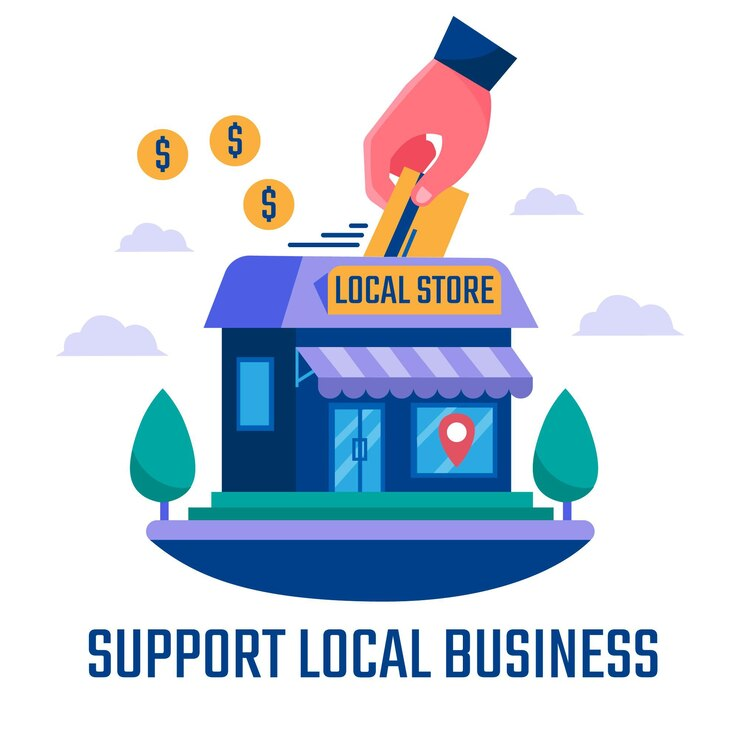
Equity Financing
Equity financing involves raising funds by selling shares of ownership in the company to investors in exchange for capital. Investors receive ownership stakes and may have a say in business decisions but do not expect repayment like lenders.
Pros
-
No obligation to repay the investment.
-
Potential for business mentorship and guidance from investors.
-
Can provide substantial capital for growth.
Cons
-
Loss of ownership and control as investors hold equity stakes.
-
Dilution of ownership and profits among shareholders.
-
Potential conflicts with investors over business decisions.
Invoice Factoring
This method involves selling unpaid nvoices to a factoring company at a discount in exchange for immediate cash. The factoring company then collects the payment from the customers.
Pros
-
Immediate cash flow improvement by converting invoices into cash.
-
No new debt is incurred.
-
Suitable for businesses with outstanding invoices but limited liquidity.
Cons
-
Discounted value of invoices means reduced revenue.
-
Requires customer notification and direct payment to the factoring company.
-
May harm customer relationships due to involvement of a third party.
Asset-Based Lending
Asset-based lending involves using company assets (such as inventory, equipment, or accounts receivable) as collateral to secure a loan. The loan amount is based on the value of the assets pledged.
Pros
-
Uses existing assets as collateral without equity dilution.
-
Can secure larger loan amounts compared to unsecured loans.
-
May offer lower interest rates compared to unsecured loans.
Cons
-
Risk of losing assets if unable to repay the loan.
-
Evaluation and monitoring of assets required, increasing administrative burden.
-
Limited to the value of the assets pledged as collateral.
Crowdfunding
Crowdfunding involves raising funds by collecting small amounts of money from a large number of people, usually through online platforms. It can be reward-based, donation-based, equity-based, or debt-based crowdfunding.
Pros
-
Access to a wide pool of potential investors or backers.
-
Can generate publicity and validate market demand.
-
Multiple crowdfunding models offer flexibility in raising funds.
Cons
-
Campaigns require time and effort to create and manage.
-
Not guaranteed funding; campaigns might fail to reach the target.
-
Platform fees and marketing costs can eat into funds raised.
Factors to Weigh When Seeking Funding Support for Your Online Retail
When seeking financial support for your online retail business, it’s crucial to consider several factors to ensure that the funding aligns with your goals and supports your business’s growth. Here are key factors to weigh:
Goals
-
Short-Term and Long-Term Objectives: Determine what you aim to achieve with the funding—expanding product lines, entering new markets, improving technology, or increasing marketing efforts.
-
Business Growth: Consider how the funding will contribute to scaling your online retail business and whether it aligns with your growth strategy.
Needs
-
Specific Financial Requirements: Assess the precise amount of funding required and how it will be utilized—inventory procurement, marketing campaigns, technology upgrades, etc.
-
Type of Funding: Evaluate which funding options best suit your needs—whether it’s a loan for immediate capital, equity for long-term growth, or other financing models.
Timeline
-
Urgency: Determine how quickly you need the funds and whether the funding sources you’re considering align with your timeline.
-
Repayment Schedule: Consider the repayment terms and ensure they fit within your business’s cash flow projections.
Finances
-
Current Financial Health: Assess your business’s financial position, including revenue, expenses, profit margins, and cash flow.
-
Debt Capacity: Consider how additional debt or equity will impact your business’s financial structure and ability to service any new financial obligations.
Know Who You’re Dealing With
-
Credibility and Reputation: Research the credibility and reputation of potential lenders, investors, or funding sources.
-
Terms and Conditions: Understand the terms, interest rates, fees, and any other obligations associated with the funding.

Top 8 Funding Options for eCommerce Businesses
1. Payability
Definition
Payability offers accelerated payments to eCommerce sellers by providing them with daily cash flow based on their marketplace sales. They bridge the gap between when sellers make sales and when they receive the funds from the marketplace platforms.
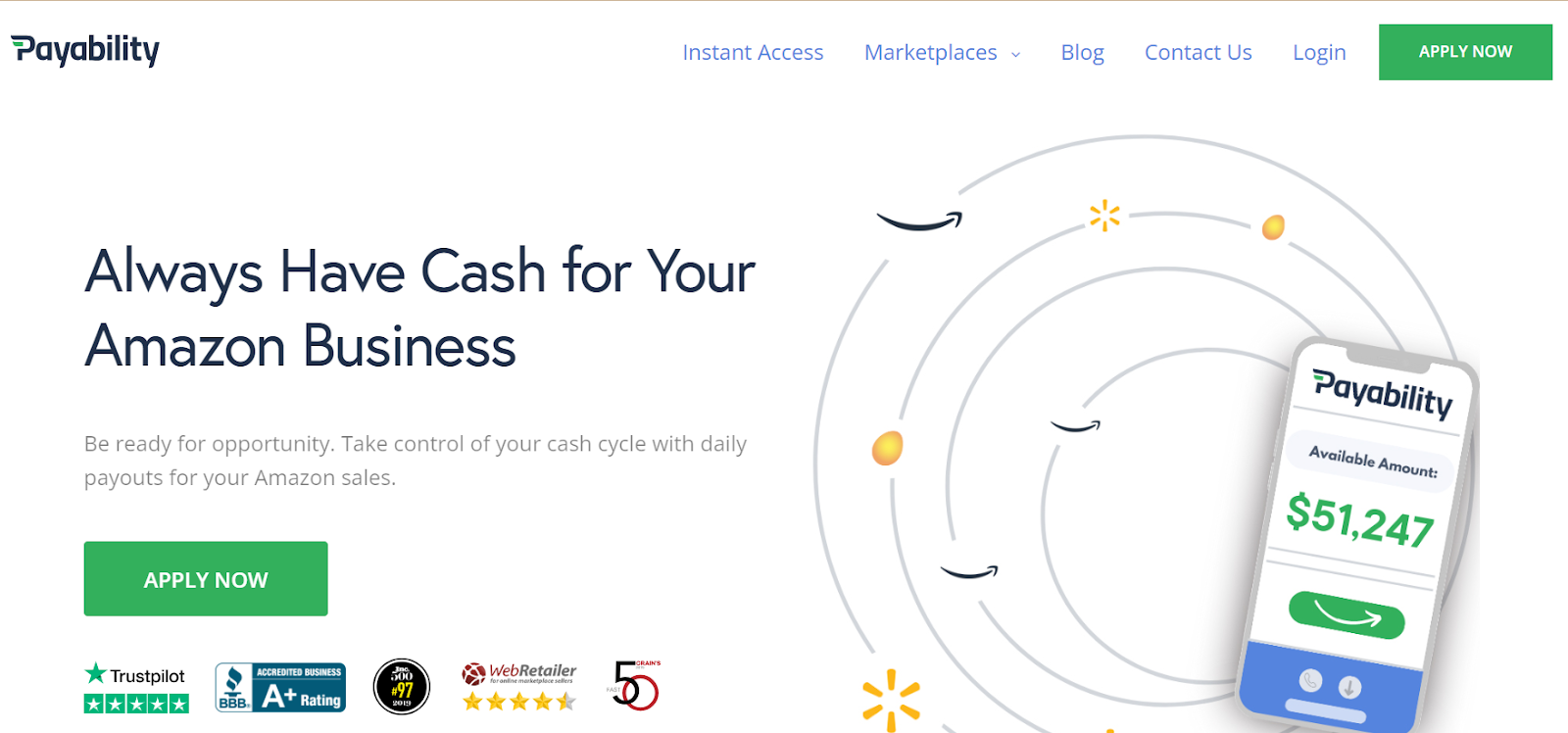
How it Works
Payability advances a portion of the seller’s future marketplace sales (for example, Amazon sales or Shopify sales) rather than waiting for the typical payment cycle of these platforms. Sellers receive daily payouts instead of waiting for bi-weekly or longer payout cycles.
Conditions for Receiving Funding
Eligibility for funding from Payability typically depends on a seller’s sales history and account performance on the specific marketplace platform. They assess the seller’s sales volume, account health, and other factors to determine the amount of funding they can provide. Generally, to qualify for Payability’s services, sellers should have a certain minimum monthly sales volume and a good track record of sales on the supported marketplace platforms.
Benefits
-
Accelerated cash flow: Sellers can get their earnings more quickly, which can be used for inventory restocking, marketing, or other operational needs.
-
Improved cash flow management: Daily payouts allow for better budgeting and managing business expenses.
-
No credit checks: Payability’s funding decisions are based on sales performance, not on the seller’s credit history.
Considerations
-
Fees: Payability charges fees for their services, which could affect profit margins.
-
Sales history: Eligibility is based on sales performance on supported marketplaces.
Services Offered
-
Instant Access: Daily payouts for Amazon and other marketplace sales.
-
Instant Advance: Larger lump sum advances for sellers who need capital for growth.
2. Wayflyer
Definition
Wayflyer is an eCommerce business funding that focuses on offering financing options and data-driven analytics to support eCommerce merchants in scaling their businesses efficiently.
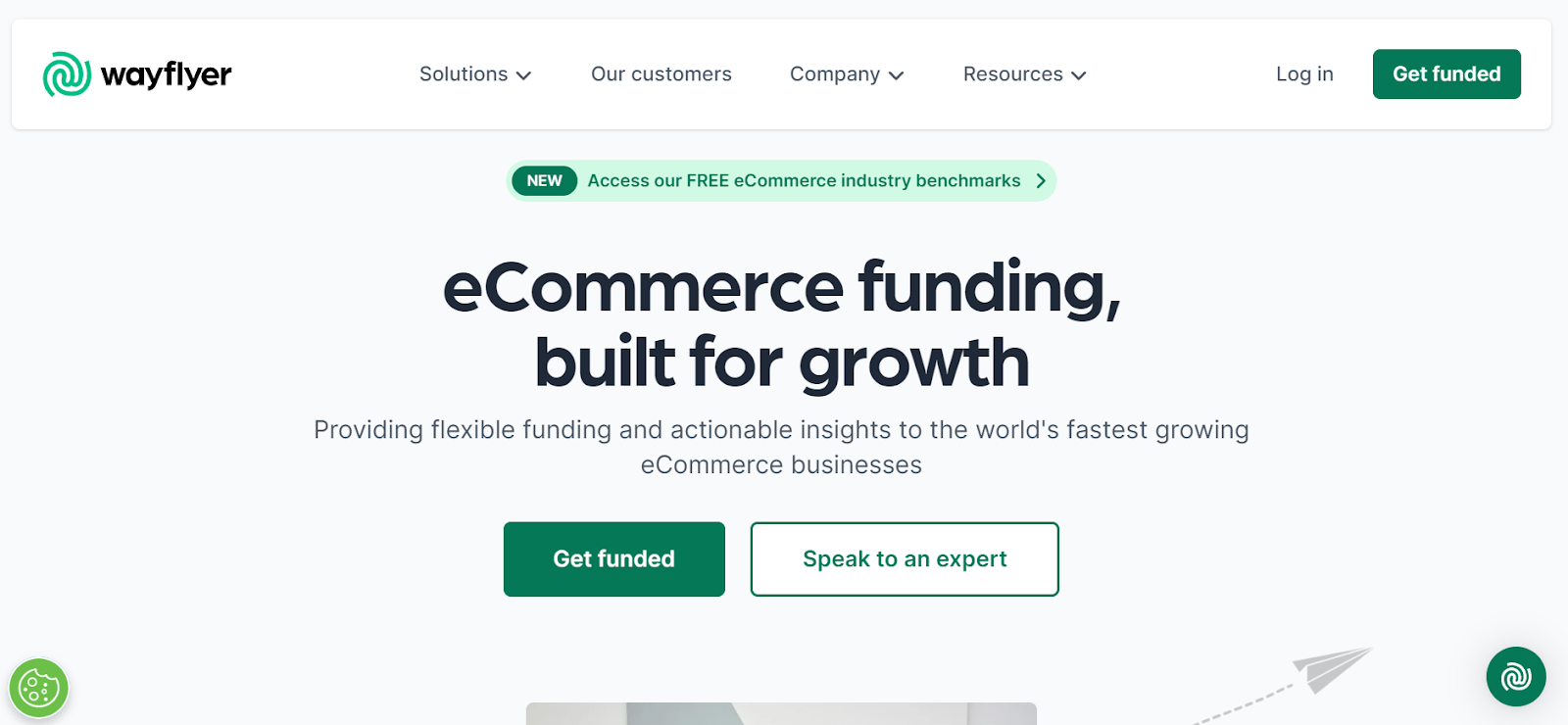
How it Works
-
Revenue-Based Financing: Wayflyer provides funding based on a company’s historical sales data and performance. They assess the eCommerce seller’s revenue streams and offer financing based on anticipated future sales.
-
Marketing Analytics: Alongside financing, Wayflyer provides analytical tools to optimize marketing strategies. They use data insights to identify profitable marketing channels and improve the return on investment (ROI) for marketing spend.
Conditions for Receiving Funding
Wayflyer’s funding eligibility criteria typically include a minimum monthly revenue threshold generated from online sales. For instance, a business might need to have a minimum monthly revenue, such as $10,000, to qualify. Other factors considered may include the business’s sales history, marketing performance, and overall operational metrics to determine the funding amount and terms.
Benefits
-
Revenue-based funding: Financing solutions are directly tied to a merchant’s sales performance, providing access to capital based on anticipated revenue.
-
Marketing insights: Data-driven analytics aid in making informed decisions about marketing strategies, helping to optimize spending and improve ROI.
-
Flexible repayment: Repayment terms may be structured based on a percentage of future sales, allowing for flexibility linked to revenue fluctuations.
Considerations
-
Fees and terms: Wayflyer may have associated fees or interest rates tied to the funding provided, impacting the overall cost of financing.
-
Eligibility criteria: Businesses must meet specific revenue and operational criteria to qualify for funding.
Services Offered
-
Revenue-based financing: Advances based on anticipated future sales revenue.
-
Marketing analytics: Utilizing data insights to optimize marketing strategies and improve marketing ROI.
3. Shopify Capital
Definition
Shopify Capital is a financing service provided by Shopify directly to eligible merchants operating on the Shopify platform. It offers financial assistance in the form of loans or cash advances to help merchants manage and expand their businesses.

How it Works
-
Loan or Cash Advance: Shopify Capital may offer funding to eligible merchants in the form of a lump sum cash advance or a fixed-term loan.
-
Sales-based Repayment: Repayment terms typically involve a percentage of future sales or a fixed repayment schedule. This repayment is often tied directly to the merchant’s daily or weekly sales, making it more manageable during fluctuations.
Conditions for Receiving Funding
-
Shopify Merchant: Eligibility is limited to merchants using the Shopify platform for their online stores.
-
Sales Performance: Shopify Capital assesses a merchant’s sales history and performance on the Shopify platform to determine eligibility and funding amounts. There might be specific sales thresholds or requirements to qualify.
Benefits
-
Simplified Process: As the funding source is directly through Shopify, the application and funding process can be relatively streamlined and accessible to Shopify sellers.
-
Sales-Tied Repayment: Repayment terms tied to sales performance can be advantageous during slower sales periods, offering flexibility in repayments.
-
Accessible to Small Businesses: Provides access to funding for small and medium-sized businesses that might otherwise struggle to secure traditional loans.
Considerations
-
Eligibility Criteria: Qualification for Shopify Capital funding depends on a merchant’s sales history and performance on the Shopify platform.
-
Terms and Fees: Shopify Capital may have specific terms, fees, and repayment structures associated with the funding provided, impacting the overall cost of financing.
Services Offered
- Funding options: Cash advances or loans for Shopify merchants.
- Streamlined process: Quick and accessible funding directly through the Shopify platform.
-
4. PayPal Working Capital
Definition
PayPal Working Capital is a loan program designed to offer small businesses and eligible merchants access to capital based on their PayPal sales activity.
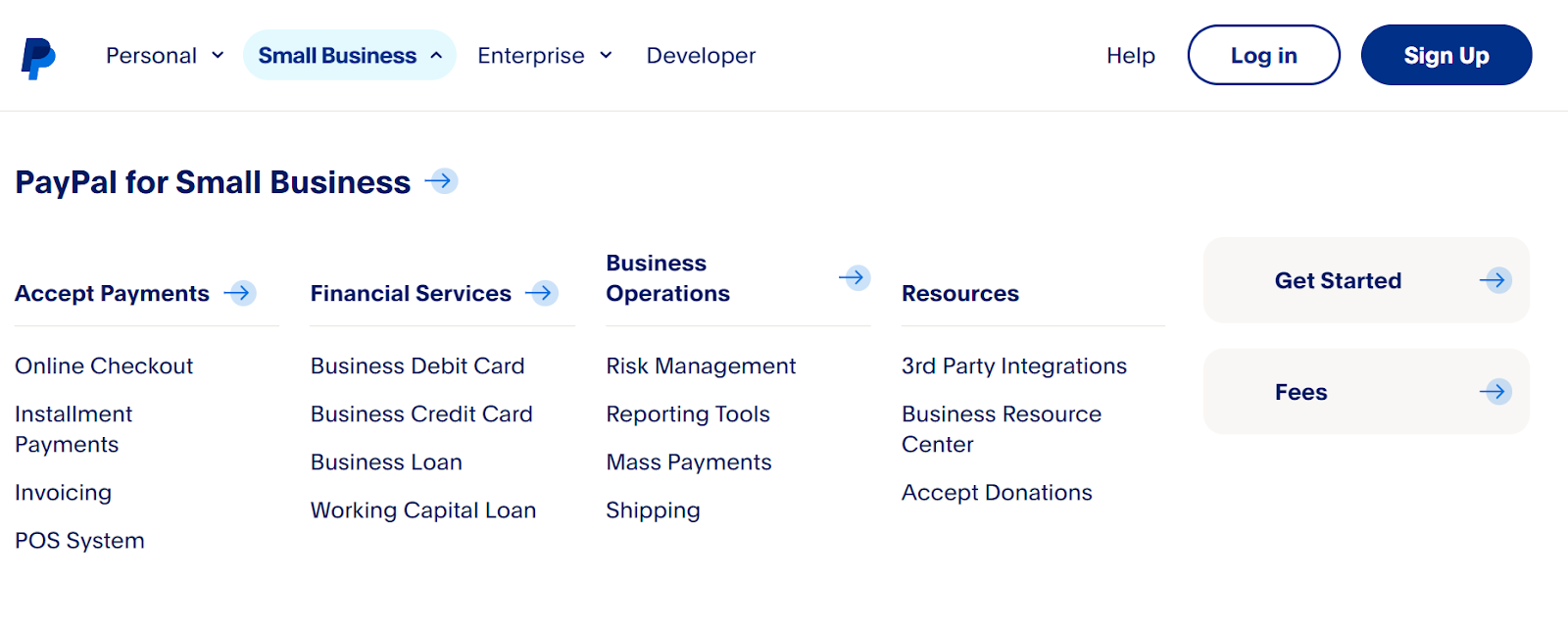
How it Works
-
Sales-Based Loan: PayPal offers loans to eligible merchants based on their sales history processed through PayPal.
-
Fixed Fee Structure: Instead of traditional interest rates, PayPal Working Capital charges a fixed fee on the loan amount. There are no periodic interest charges or hidden fees.
-
Automatic Repayment: Repayment is made automatically as a percentage of the merchant’s daily PayPal sales. This means that during slower sales periods, repayments adjust accordingly.
Conditions for Receiving Funding
-
PayPal Business Account: Eligibility for PayPal Working Capital requires having an active PayPal Business account.
-
Sales History: PayPal assesses the merchant’s PayPal sales history to determine eligibility and the loan amount a business qualifies for. A minimum sales threshold may be required.
Benefits
-
Access to Capital: Provides access to funding that is directly tied to a merchant’s PayPal sales volume.
-
No Fixed Payments: Repayment flexibility as payments are based on a percentage of daily PayPal sales.
-
Simple Application: The application process can be relatively straightforward for eligible businesses using PayPal as their payment processor.
Considerations
-
Eligibility Criteria: Qualification depends on the merchant’s PayPal sales history and account activity.
-
Fixed Fee Structure: While there are no traditional interest rates, the fixed fee structure may impact the total cost of borrowing.
Services Offered
-
Sales-based loans: Loans offered based on a merchant’s PayPal sales history.
-
Flexible repayment: Repayments linked to a percentage of daily PayPal sales, allowing for flexibility in slower sales periods.
5. Payoneer Capital Advance
Definition
Payoneer Capital Advance provides funding solutions in the form of cash advances to Payoneer users. It allowed eligible users to access capital based on their future receivables or transaction history on the Payoneer platform.
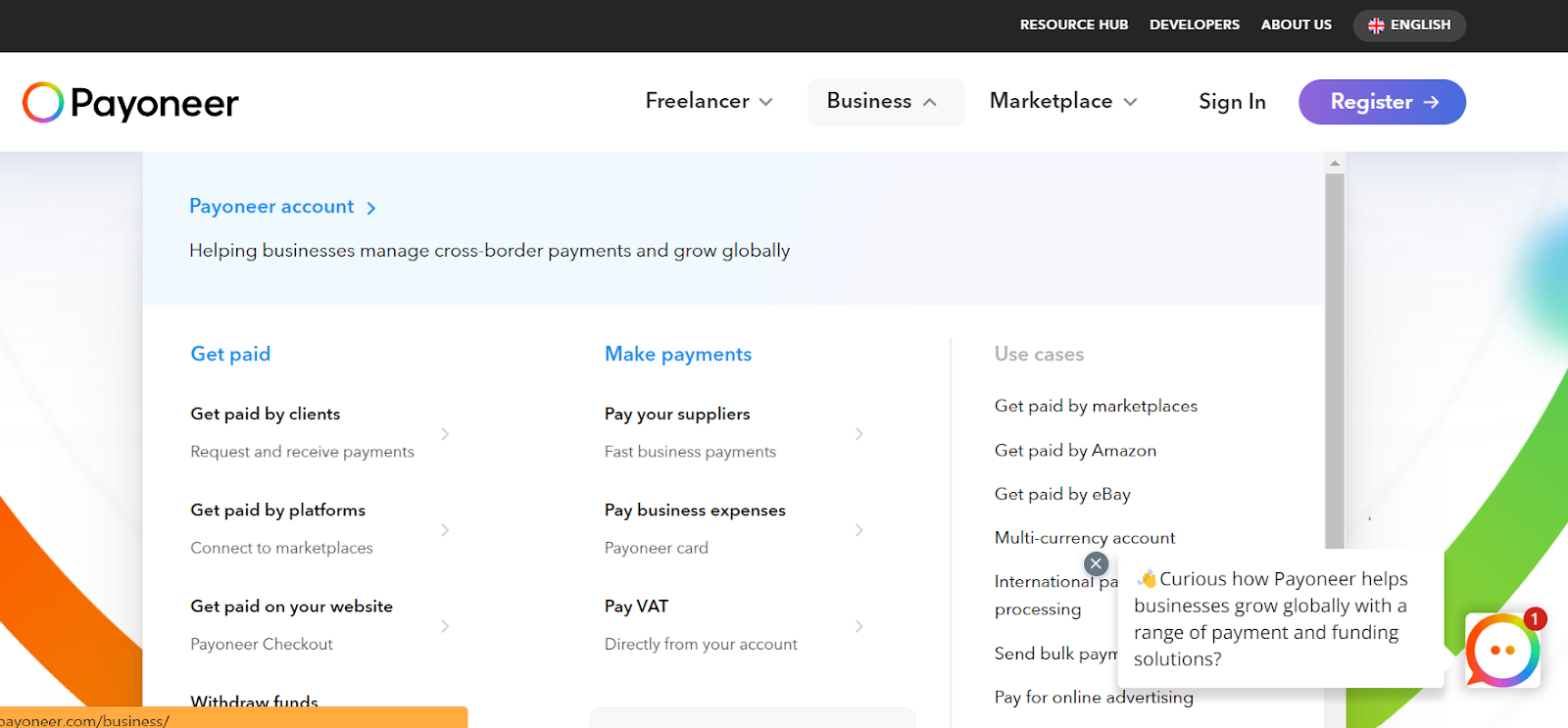
How it Worked
-
Cash Advances: Payoneer Capital Advance offered users a lump sum of money upfront based on their anticipated future receivables or transactions processed through the Payoneer platform. If you’re running your store on Shopify, here’s a step-by-step guide to integrating Payoneer with Shopify so you can easily collect your payouts and manage your cash flow.
-
Repayment: Repayment terms were structured, requiring the user to repay the advance over time. Repayment terms could vary based on the agreement and might include a fixed repayment amount or a percentage of future earnings on the Payoneer platform.
Conditions for Receiving Funding
-
Payoneer Account: Eligibility typically required having an active Payoneer account.
-
Transaction History: Payoneer assessed the user’s transaction history, volume, and activity on the platform to determine eligibility and the amount of the capital advance.
Benefits
-
Access to Capital: Users could access immediate funds based on their anticipated future receivables or transaction volume on the Payoneer platform.
-
Flexible Repayment: Repayment terms could be structured based on future earnings, providing some flexibility for users.
Considerations
-
Eligibility Criteria: Qualification depended on the user’s transaction history and activity on the Payoneer platform.
-
Repayment Terms: Users were required to adhere to repayment terms, which might include specific conditions and repayment schedules.
Services Offered
-
Cash advances: Lump sum advances based on anticipated future receivables or transaction history on the Payoneer platform.
-
Repayment plans: Structured repayment plans based on agreed-upon terms.
6. Sellers Funding
Definition
Sellers Funding is an eCommerce business funding that specializes in providing financial solutions and funding options designed for eCommerce merchants, particularly those selling on various online marketplaces.
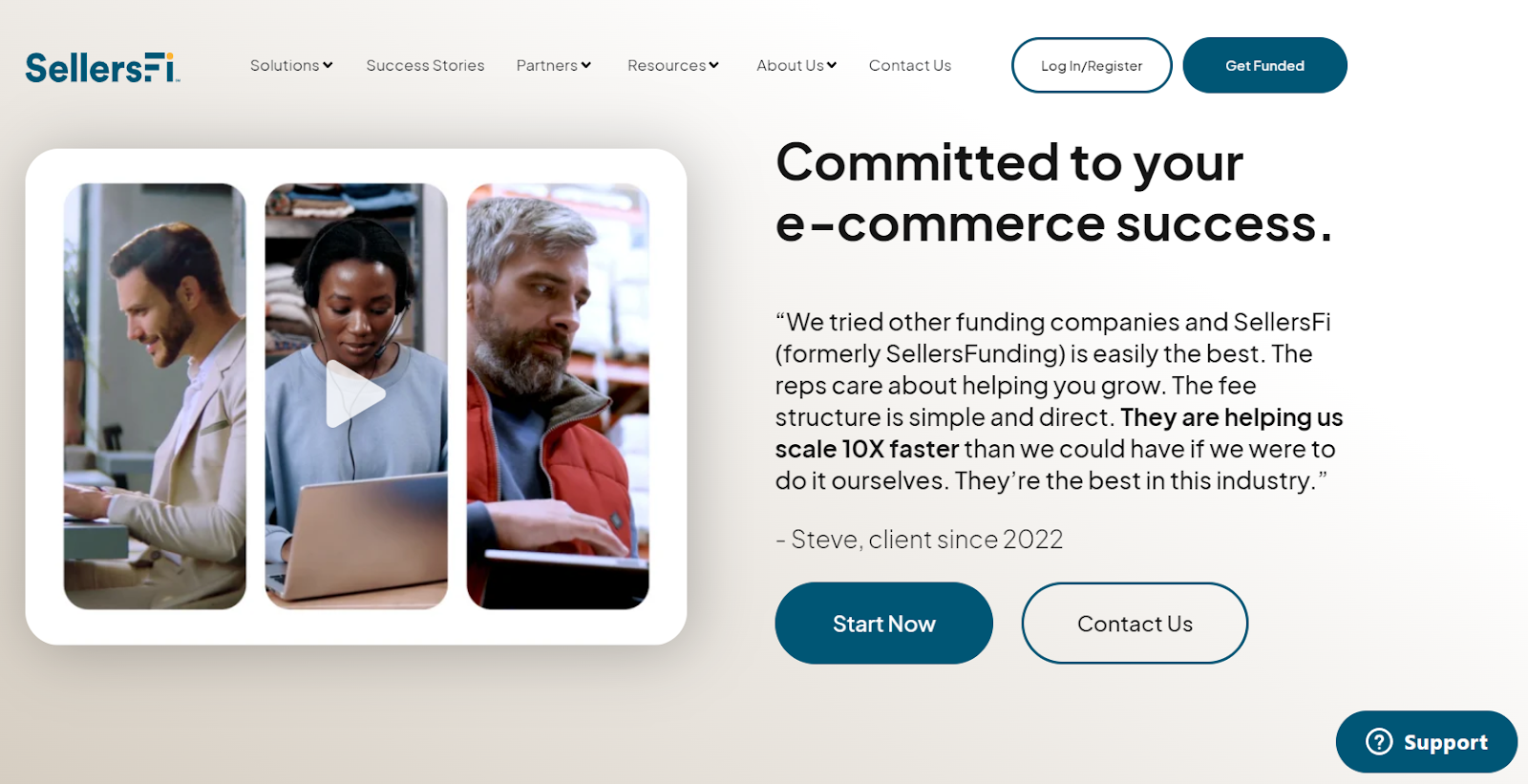
How it Works
- Funding Solutions: Sellers Funding offers different funding options, such as cash advances or loans, to eligible eCommerce sellers.
- Sales-Based Repayment: Repayment terms are often tied to a percentage of future sales or a fixed repayment schedule, aligned with the seller’s online sales performance.
Conditions for Receiving Funding
- eCommerce Sellers: Eligibility typically requires the seller to have an established business selling products or services through online platforms.
- Sales Performance: Sellers’ sales history and performance metrics, including revenue and transaction data, might be assessed to determine eligibility and funding amounts.
Benefits
-
Tailored for eCommerce: Specifically designed for the unique needs of online businesses, providing funding solutions aligned with their sales cycles.
-
Flexible Repayment: Repayment terms structured around sales performance offer flexibility during variable sales periods.
Considerations
-
Eligibility Criteria: Qualification might depend on the seller’s sales history, business performance, and account standing on supported platforms.
-
Repayment Terms: Sellers must adhere to agreed-upon repayment terms, which might vary based on the funding option chosen.
Services Offered
-
Funding options: Cash advances or loans tailored for eCommerce sellers.
-
Sales-based repayment: Flexible repayment terms linked to a percentage of future sales.
7. Uncapped
Definition
Uncapped specializes in revenue-based financing, providing growth capital to eCommerce and SaaS businesses without taking equity or requiring traditional interest repayments.
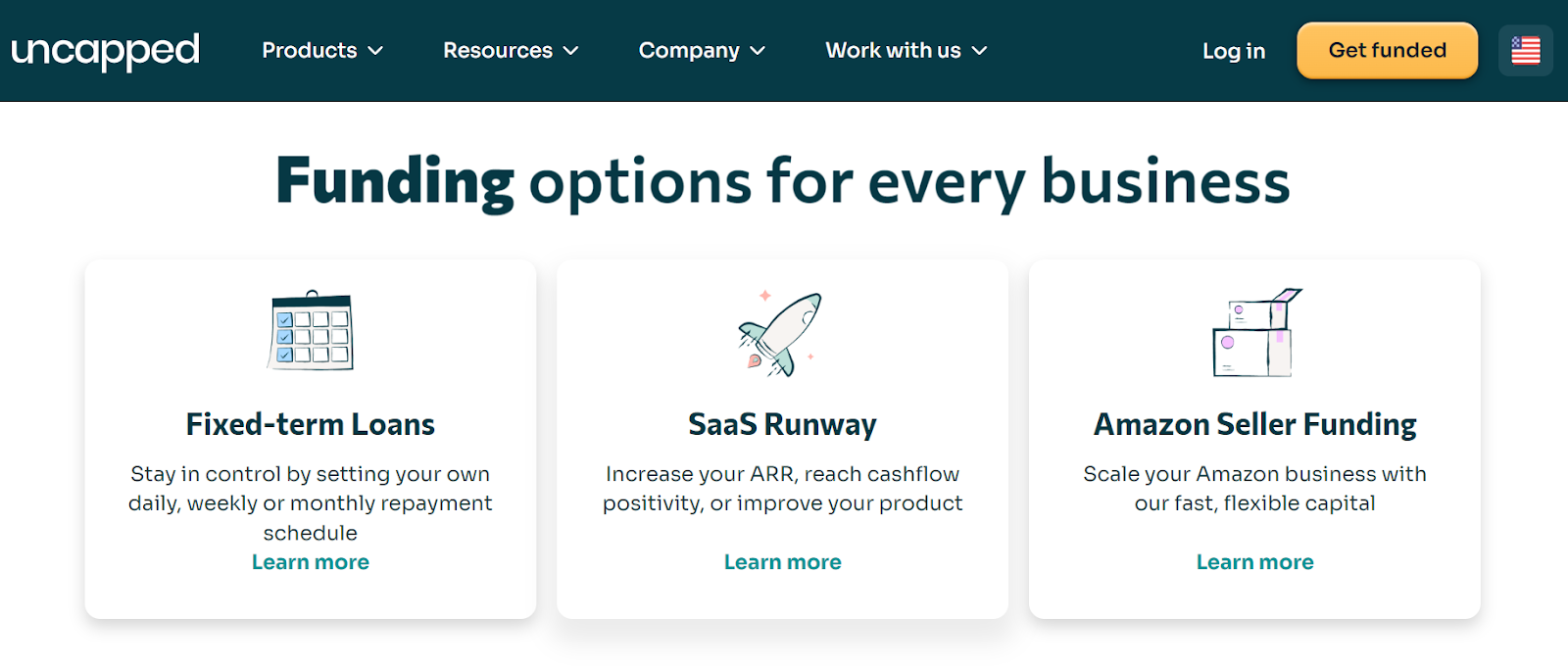
How it Worked
-
Revenue-Based Financing: Uncapped offered funding based on a company’s monthly recurring revenue (MRR) or gross merchandise volume (GMV), primarily to eCommerce businesses or software companies.
-
Flexible Repayment: Repayment terms were often structured as a percentage of future monthly revenue, allowing for flexibility based on sales performance.
Conditions for Receiving Funding
-
eCommerce or SaaS Businesses: Eligibility typically required businesses to have a steady stream of revenue, such as monthly recurring revenue for SaaS companies or gross merchandise volume for eCommerce businesses.
-
Revenue Threshold: Uncapped assessed a minimum revenue threshold to determine eligibility and the funding amount a business might qualify for.
Benefits
-
Non-Dilutive Financing: Revenue-based financing without the need for equity or traditional interest payments.
-
Flexible Repayment: Repayment terms linked to revenue, providing flexibility during sales fluctuations.
Considerations
-
Eligibility Criteria: Qualification often depended on the business’s revenue metrics and sales performance.
-
Repayment Terms: Businesses were required to meet agreed-upon repayment terms, which might vary based on the revenue-based financing arrangement.
Services Offered
-
Revenue-based financing: Funding options structured around a percentage of monthly revenue or gross merchandise volume.
-
Flexible repayment: Repayment terms aligned with revenue performance.
8. Become
Definition
Become operated as an online lending platform or marketplace, offering a range of financial products and services to businesses seeking funding.
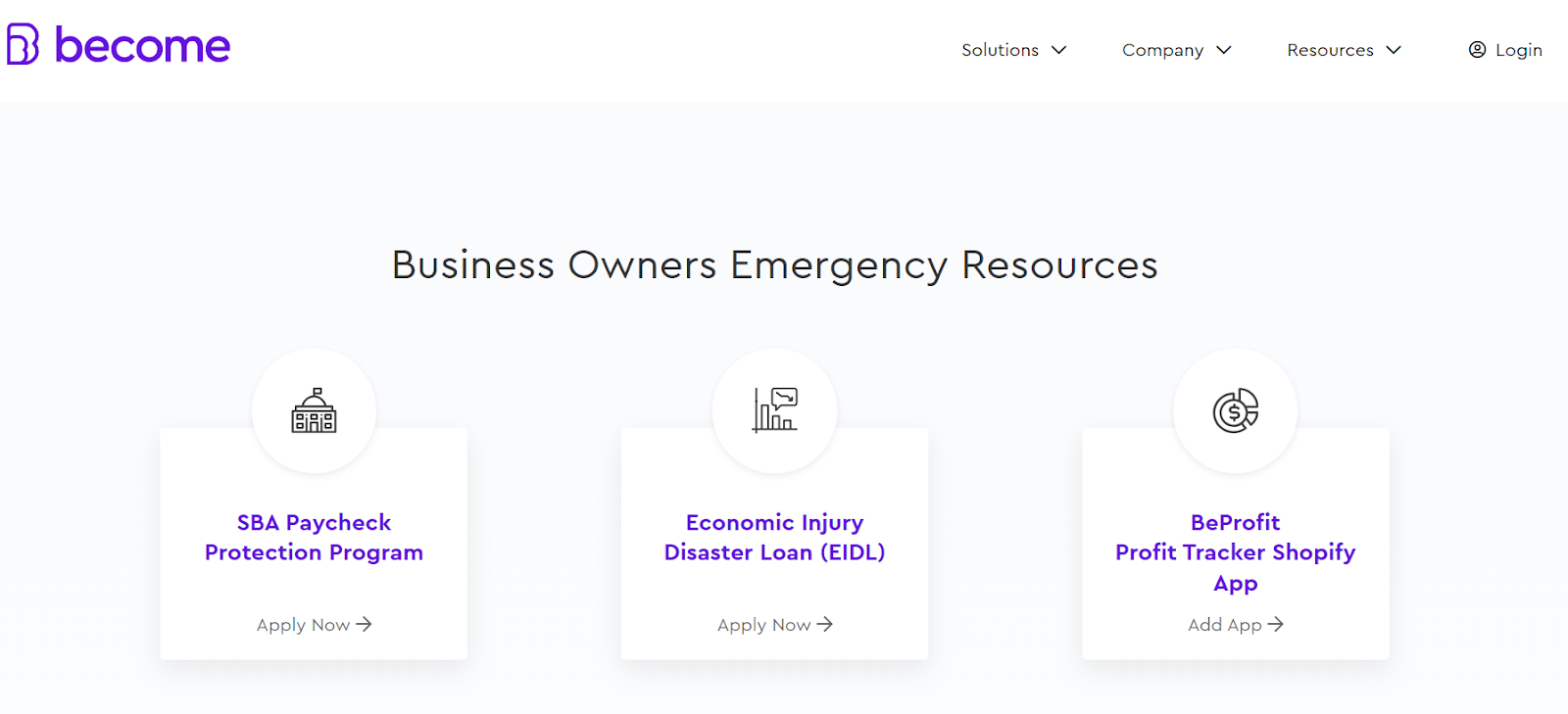
How it Worked
-
Lending Marketplace: Become a platform where businesses could access multiple funding options from various lenders.
-
Loan Options: They facilitated different types of financing, such as term loans, lines of credit, merchant cash advances, and other financial products.
Conditions for Receiving Funding
-
Business Loans: Become’s lending marketplace was designed to cater to a range of businesses, and eligibility criteria might have varied based on the type of financing sought and the lenders available on their platform.
-
Business Requirements: Businesses typically need to meet specific revenue thresholds, credit criteria, and other financial metrics to qualify for funding.
Benefits
-
Loan Options: Access to a variety of lending products allowed businesses to compare and choose financing options that suited their needs.
-
Simplified Access: Becoming provided a streamlined process for businesses to explore and apply for various funding options in one place.
Considerations
-
Eligibility Criteria: Specific requirements might have varied depending on the lender and the type of financing sought.
-
Terms and Conditions: The terms, rates, and repayment structures might have varied across different lenders available on the platform.
Services Offered
-
Lending Marketplace: Access to multiple lenders and financial products in one platform.
-
Loan Options: Various types of financing, including loans and lines of credit, to meet different business needs.
Selecting the Suitable Funding Resource for Your Company
Selecting the right funding resource for your company involves a strategic evaluation of your business’s needs, goals, and financial situation, followed by matching those requirements with the most suitable funding options available. Here’s a step-by-step guide to help you make an informed decision:
Assess Your Financial Needs
-
Determine the specific purpose for seeking funding: expansion, working capital, inventory, equipment purchase, marketing, or other operational needs.
-
Calculate the amount of funding required by considering your business plan and projected expenses. A personal loan calculator can help you estimate the loan amount and repayment terms needed to meet your financial goals.
Evaluate Different Funding Options
-
Debt Financing: Loans from banks, online lenders, or Small Business Administration (SBA) loans.
-
Equity Financing: Angel investors, venture capital, or private equity.
-
Alternative Funding: Crowdfunding, grants, peer-to-peer lending, revenue-based financing, or invoice financing.
Consider Your Business’s Stage and Risk Profile
-
Startups might lean towards equity financing due to limited assets, while established businesses might prefer loans.
-
Assess your risk tolerance and how much control you are willing to relinquish (in case of equity financing).
Understand the Costs and Terms
-
Analyze the interest rates, fees, repayment terms, and any additional costs associated with the funding options.
-
Evaluate the impact of these costs on your business’s cash flow and profitability.
Assess Eligibility Criteria
-
Understand the requirements for each funding source, such as credit score, revenue, time in business, collateral, or industry-specific criteria.
-
Choose options where you meet the eligibility criteria or can realistically work towards meeting them.
Explore Funding Timeframes and Process
-
Determine how quickly you need the funds and the timeline for application, approval, and disbursement of funds associated with each option.
-
Consider the flexibility and speed of each funding source.
Factor in Long-Term Implications
-
Consider the long-term impact of the chosen funding source on your business’s financials, ownership structure, and growth plans.
-
Evaluate how the funding will affect your future cash flow and profitability.
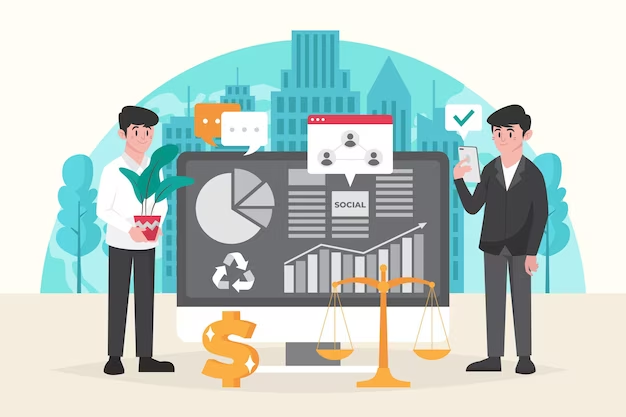
Seek Expert Advice and Research
-
Consult financial advisors, industry experts, or mentors to gain insights and guidance on the best funding options for your business.
-
Conduct thorough research and compare multiple options before making a decision.
Read and Understand the Terms and Agreements
- Carefully review all contracts and agreements associated with the funding options. Ensure you comprehend all terms, obligations, and potential risks.
Conclusion
Securing appropriate funding stands as a pivotal element for businesses aiming to thrive and remain agile in the year 2025. The plethora of available loans tailored explicitly for eCommerce endeavors presents both opportunities and challenges. By meticulously examining the top eight loans highlighted in this guide, eCommerce entrepreneurs can gain invaluable insights into the diverse financial resources at their disposal.





![Top 20+ Must-have Shopify Apps for 2025 [Free & Paid] - Mageplaza](https://cdn2.mageplaza.com/media/blog/must-have-shopify-apps/top-must-have-shopify-apps.png)
![[2025 Updates] Top 10+ Upsell Apps for Shopify - Mageplaza](https://cdn2.mageplaza.com/media/blog/best-upsell-shopify-app/cover.png)